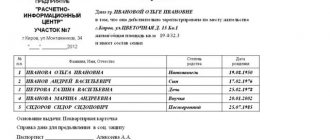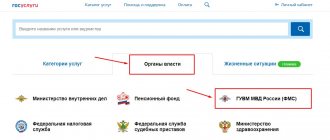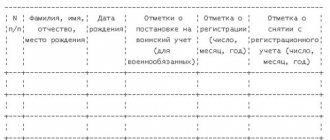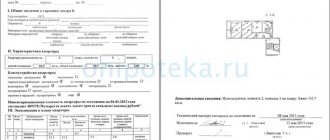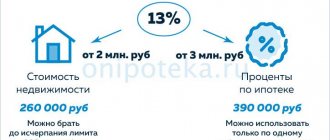RF PP No. 354 allows the administrative authority to draw up an act stating that more consumers live in an apartment without an IPU than are officially registered there. This is not easy to do. We tell you how to correctly draw up an act on identifying citizens temporarily residing in an apartment, so that you can then use its data when paying for the utility bill.
When the use of increasing coefficients affects the volume of CD on SOI
169897
Draw up an act on the identification of temporary residents for apartments without individual property rights
The question of how long a person actually lives in an apartment is important for management organizations, HOAs and RSOs. The number of residents affects the calculation of fees for the corresponding housing or utility service, if it is made taking into account the number of consumers registered in the premises.
Payments for most housing and communal services today are calculated based on the area of the apartment owned by the owner or according to the readings of individual/communal metering devices. However, the actual number of consumers in the premises is important if the payment for utility services is calculated based on the standards: in the absence or failure of the IPU.
Management organizations and homeowners associations are interested in knowing the true number of consumers living in the apartment. If, according to the information provided by the utility contractor, there are only 1-2 people in the room, but in fact a large family consumes utility resources, then the volumes not taken into account in the standard will end up in the Kyrgyz Republic on SOI.
The issue is not so acute in apartments where IPU could be installed, but the owners did not do so. Then an increasing factor is applied to the standard, and this can significantly compensate for incorrect calculations due to inaccurate data on the number of consumers.
But if it is technically impossible to install utility meters in the premises, and a report has been drawn up about this, then the management organization and the HOA may incur large expenses when paying for the bill for public utilities, because the value of the consumption standard directly depends on the number of people living in the apartment:
Electricity consumption standards in Karelia
Design rules
To draw up the document, it is necessary to organize a special commission, which includes a local police officer, a representative of the management company (housing office), and one of the neighbors. Verification of the fact of residence is carried out in the presence of the owner of the apartment. There is no strict standard for drawing up an act, there are only general recommendations.
After the commission meets, it checks the specified premises in which the required person lives or does not live.
The act indicates the place of verification and proof of the fact. At the end, witnesses and commission members put their signatures.
Then the document is transferred to the place of use or requirement. It is recommended to attach other evidence of the fact to the act, for example, these could be photographs confirming the citizen’s constant presence in the apartment, his visit to it.
Sometimes, to confirm a citizen’s residence at one or another specified address, it is even necessary to go to court. An application is submitted, a fee is paid, real witnesses are selected. Along with the application, you must submit a certificate from the Housing Office about family composition.
Do not draw up an act if there is an application from the owner of the apartment about temporary residents
In RF PP No. 354, legislators officially gave consumers and providers of utility services the opportunity to resolve the issue with citizens unregistered in an apartment in two ways: voluntarily and forcibly.
Voluntarily, this is when the owners of an apartment or a person permanently residing in it sends a statement to the executor of the property management agreement that there are temporary, that is, more than 5 days, residents in his residential premises (clauses 56, 57(1) of the RF PP No. 354 ).
Such a statement must indicate the last name, first name and patronymic of the author of the document, address and information on the number of temporarily residing consumers. The owner must also indicate the start date of unregistered persons living in the apartment and, if possible, the date of their departure.
The owner of the apartment or the consumer permanently residing there must send such a statement to the contractor within 3 working days from the moment temporary residents appear in the apartment. However, cases when owners of premises in apartment buildings write such statements are the exception rather than the rule.
On the right of the MA to apply coefficient 10 when interfering in the work of the IPU
118403
About the place of residence as such
Well, how is the concept of place of residence defined in the legislation of our country? It means an object that serves as a place of permanent residence. Most often this is an apartment or a residential building. Registration there is required in a number of cases, in particular when moving for permanent residence to another place.
What documents do you need to stock up on to obtain permanent registration? This is usually a certificate of ownership of a residential property (for example, in the case of purchasing an apartment). If we are talking about a new building, such a document can be the house acceptance certificate. When a person registers in someone else’s apartment, it is impossible to do without the consent of the owner of the premises.
Other publications: Non-profit partnership agreement
Permanent registration is considered to have no restrictions on its validity period. It can only be canceled in individual cases provided for by law. Such registration, as already mentioned, must be confirmed by a stamp on the corresponding page of the passport.
Strictly follow the procedure for drawing up and signing the act in accordance with RF PP No. 354
Owners are in no hurry to write statements to housing and communal services contractors stating that more consumers live in their apartment than are officially registered. Then the management organization, HOA and RSO have the right to independently record such information by drawing up an act establishing the number of citizens temporarily residing in the residential premises (clause 56(1) of the RF PP No. 354).
The rules for drawing up such an act are prescribed in clause 56(1) of the RF Government No. 354:
- The act indicates the date and time of its preparation, last name, first name and patronymic of the owner or permanently residing consumer, address, information on the number of temporarily resident consumers. If it is possible to determine from what time an unregistered person has been living in an apartment, then the start date of the temporary stay is set. In this case, an important condition for affixing such a date is the presence of the signature of the apartment owner.
- The act must be signed by the contractor and the owner of the premises. If the owner is absent from the apartment when the act is drawn up or refuses to sign it, then a note about this must be made in the document. It is also necessary that in such a situation the act is signed by at least 2 consumers and a member of the MKD council/chairman of the HOA.
- One copy of the act must be given to the owner of the apartment/permanently residing consumer. If he refuses to take the document, this must also be noted in the act.
- The act must be sent by the executor to the internal affairs bodies within 3 days from the date of its preparation.
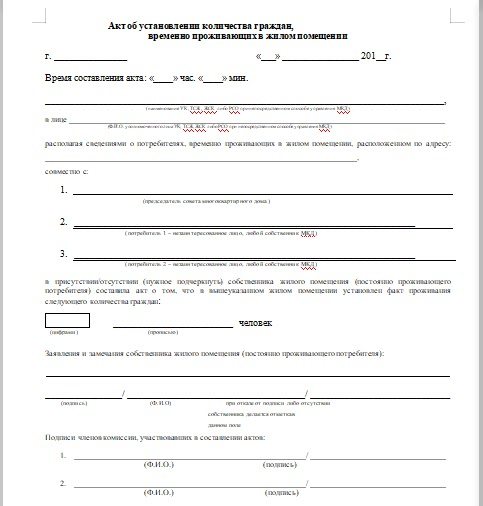
Consideration of an application to establish the fact of residence
The time frame for consideration of civil cases to establish the fact of residence is 2 months from the date of filing the application with the court. Typically, the court considers such applications at the first court hearing. If the content of the application is not clear to the judge, he may schedule a preliminary interview. Carefully read the notice to appear in court to present evidence requested by the court.
After a decision has been made to establish the fact of residence, it will be necessary to obtain a copy of it from the court; the decision will enter into legal force 1 month after it is made in its final form.
A court decision that has entered into legal force must be presented to the institution together with other documents. In this case, the court decision to establish the fact of residence will replace the document on registration at the place of residence.
Hand a copy of the act to the apartment owner or make a note indicating his refusal to receive it.
The task of drawing up such an act is not easy in itself: it is unlikely that the owners of “rubber” apartments will willingly allow representatives of the management organization or HOA to visit them for inspection. But if, after all, the MA succeeded, then it is worth strictly following the requirements of RF PP No. 354 for such an act, so that the efforts are not wasted due to a technical error.
The importance of following all the requirements of RF PP No. 354 to the act on establishing the number of consumers living in the premises was emphasized by the RF Supreme Court in September 2020, summing up court case No. A56-102775/2018.
The management organization was able to draw up an act in which it was recorded that unregistered persons lived in the apartment, where individual meters were not installed. Based on this document, the management authority began to calculate utility bills.
The owner of the apartment with inflated charges did not agree and filed a complaint with the State Housing Property Authority. The agency, having conducted a documentary check of the management, issued an order to the company to stop the violation and recalculate consumers without taking into account the data specified in the act.
The management organization filed a lawsuit demanding that the order of the GZHN body be declared invalid, since it acted in accordance with paragraphs. 56, 57 RF PP No. 354.
How to draw up an act on unaccounted consumption so that it is not challenged by the court
380500
The essence of the act of actual residence
An act of actual residence in a residential premises may be required during the eviction of a person who does not live at the place of registration or registration. A similar question may arise when there is an illegal rental of premises and it is necessary to expel the person at his place of registration. The paper also confirms that the person actually lives at the place of registration.
If a person does not live where he is registered for a long time, neighbors have the right to file a complaint. An act of actual place of residence may also be needed in other cases, for example, when it is necessary to provide information to the investigation or the police. Sometimes citizens ask to draw up a report if a person has not lived in the apartment where he is registered for many years and a recalculation of utility bills is needed.
The document has certain advantages, namely:
- A person evicted from an apartment loses his right to property;
- Promotes the eviction of neighbors if illegal rentals have occurred;
- Provides the opportunity to remove a person from registration in a residential premises if he lives at a different address, but does not want to be checked out;
- Gives the right to reimburse utility bills.
The main task of the paper is to prove or disprove the fact of a person’s residence in the apartment. The document contains:
- Date of compilation and place;
- A link to data confirming that the citizen lives or is not at a specific address for a certain time.
If the actual address of the citizen is unknown, this must also be indicated. The document contains information about the citizens who took part in its preparation. The text of the document includes information about the status of participants in this process.
The act can be supplemented with the address and passport details of the citizens who signed it. Then the document is sent to the management company. It should be added that the act of actual residence in many cases helps to resolve the situation with services dealing with migration issues. If you want to draw up an act, you will need the signatures of neighbors and employees of the management company. In some cases, the document is certified by a notary.
Be sure to send a copy of the act to the internal affairs body
The court of first instance rejected the claim of the management organization, pointing out that the plaintiff did not fulfill all the requirements for the procedure for drawing up an act on identifying the persons actually living in the apartment. The act was not handed over to the owner of the apartment and was not sent to the internal affairs bodies.
The Court of Appeal overturned the first instance decision. The judge noted that the contents of the act complied with the requirements of paragraph 56(1) of the RF PP No. 354, and the accuracy of the information contained in it was confirmed by verification. Failure to send the act to the internal affairs bodies does not change the fact that more people live in the apartment than are registered. Consequently, the management authority has the right to calculate the fee for corporate governance according to the data of such an act.
The GZHN body filed a complaint with the court of cassation, which returned to the position of the first instance, canceling the decision of the appellate court. The MA did not carry out all the actions required of it when drawing up the act, without sending a copy of the document to the owner and to the body authorized to carry out functions of supervision in the field of migration.
The drawn up act cannot be recognized as an appropriate document for calculating fees for utility services based on the number of living citizens indicated in it. The Supreme Court of the Russian Federation confirmed the correctness of the position of the cassation court. The order of the GZHN body remained in force, and the management office had to recalculate the payment for utility services without taking into account the data specified in the act.
If you need to evict your neighbor tenants
There are times when we have to deal with illegal actions such as renting out living space. It happens when people renting housing violate generally accepted rules and disturb other residents, and the official owners of the apartment do not take any action.
Executed documents on actual residence help in cases where housing is leased with violations. It will be necessary to make documents indicating the fact that the owners do not actually live in their own apartment. With this official conclusion, it is much easier to file a complaint with the relevant authorities.
Read more: Job responsibilities of the department head
It is possible to use other evidence that the housing is being rented illegally. For example, you can contact the housing office, where they will provide official confirmation of the fact that the rental is illegal.
It is also possible to contact regional authorities. In this option, the police are responsible for checking the residence of persons at their place of registration.
According to the law, homeowners must promptly notify about new persons registering at the same address. Inspecting authorities can check the place of residence of any citizen.
Note! However, even a signed act on the place of residence is not a sufficient argument for recalculating the payment for the resources used in the apartment.
Collect a commission to confirm the residence of unregistered persons in the apartment
Failure to forward the act to the internal affairs bodies, which draw up a protocol on an administrative offense under Art. Art. 19.15, 19.15.1, 19.15.2 of the Code of Administrative Offenses of the Russian Federation most often becomes the reason for declaring the actions of the administrative authority illegal. A similar position of judges is found, for example, in cases No. A54-4279/2015, No. A50-22264/2015, No. A13-7749/2014.
When drawing up an act, the management authority may take into account the recommendations given in the “Methodological recommendations for identifying individuals using residential premises.” The document was approved by the Department of Housing and Public Utilities and Improvement of the City of Moscow on June 14. 2013 No. 05-14-182/3.
The authors of the document recommend carrying out an inspection to draw up an act at least twice during the billing period, and doing this by a whole commission. Such a commission should include representatives of the management unit/homeowners' association and the council of the apartment building, the local police commissioner, and at least two independent witnesses. Such precautions will help the contractor prove in court the accuracy of the information specified in the act.
Act from neighbors
Indicate the following information in the act:
- Title of the document;
- Full name and contact information about neighbors;
- information about the person’s residence in the inspected residential premises;
- date, signatures of neighbors.
The act can be certified by a housing department employee or a local police officer.
ATTENTION! Look at the completed sample act of residence or non-residence from neighbors:
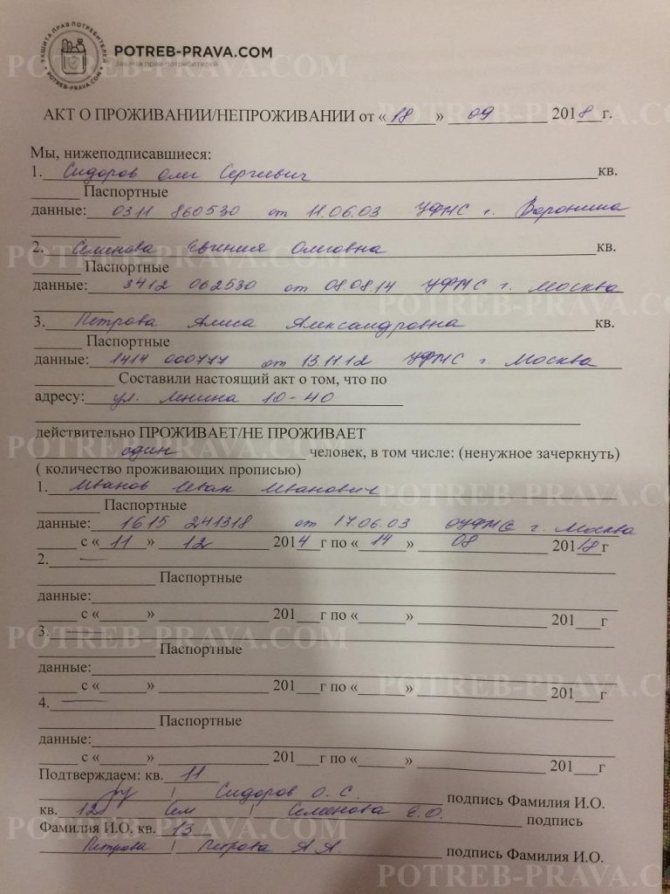
On a note
The presence in the RF PP No. 354 of legal grounds for the executor of the CU to draw up an act on the residence of more consumers in the apartment than officially registered, does not help the management authority and the HOA to cope with “rubber” apartments where IPU are not installed.
At first, it is quite difficult for them to draw up an act stating that there are temporary residents in the premises, and then prove to supervisory agencies and the court that they have the right to take into account the data in the act when calculating fees for housing and communal services.
If the management company or the HOA decides to finally achieve the truth, establish the number of consumers living in the apartment and draw up an act, then they should strictly comply with the requirements of RF PP No. 354 for this process. They need to make all the necessary notes in the act, put signatures, and send a copy of the document to the owner of the apartment and to the internal affairs body.
The procedure for generating documentation
The right to initiate the process of certifying the fact of residence in a living space belongs to any interested party, including the owner and neighbors. There are mandatory requirements for the procedure. They relate both to the preparation of the certificate itself and to the actions of interested parties. For example, the paper should be formed exclusively in written form. Compilation is done manually.
During the inspection, the presence of all members of the commission is mandatory. The owner of the apartment also participates in the event (at the time of its inspection). The text identifies all persons who acted as witnesses. Their testimony is also recorded on paper. Documentation relevant to the case is supported in the form of appendices. If a person does not want to sign a document, then the compiler puts a corresponding mark in the text. Visas must be supplied by witnesses and a representative from an organization operating in the housing and communal services sector.
Important! If the employees of the house management company are not going to certify the documents and are deliberately stalling for time, you need to contact the people living in the neighborhood. The latter have the right to witness the conduct of events. In addition, a notary can certify the papers.
Download: form of act of actual residence in the apartment
